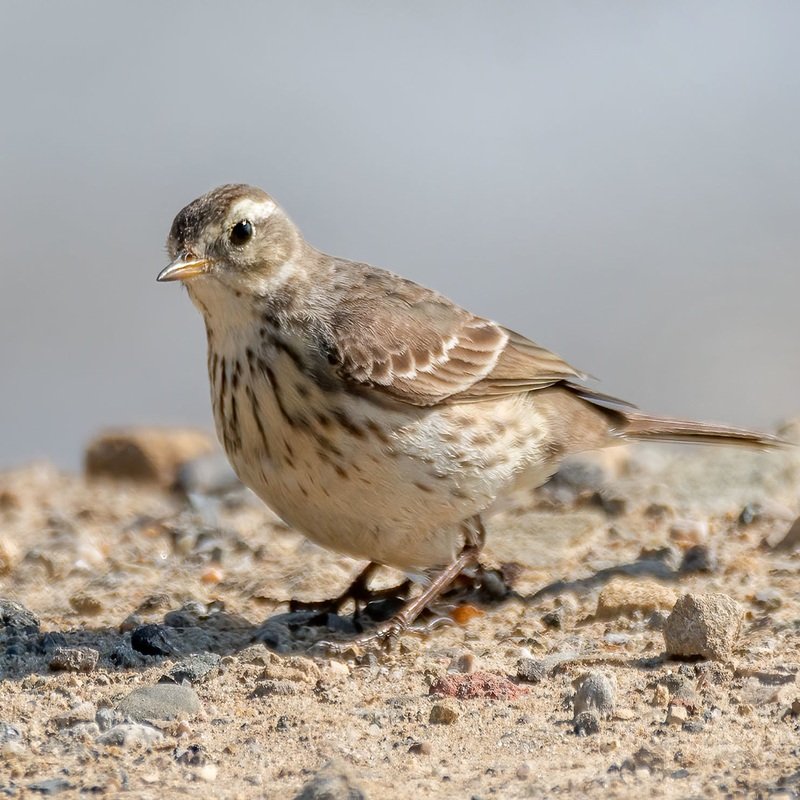Small songbird found on both sides of the northern Pacific, Anthus rubescens in Latin name. It was previously classified as a water pipit. “American pipit” in North America, “buff-bellied” in Eurasia. It is in the family of Motacillidae.
Quick Overview: Anthus Rubescens – American Pipit
Body size: Around 6.5in (17cm) in length with 23 g(0.8 oz)
Main colors: Gray-Brown, White, Black
Range: Western and Southern North America
Migratory Bird: Yes
Best time of the year to see in the U.S.: January, February, June, July, August, September, December
Conservation Status: Least Concern
American pipit Description
American pipit is a small bird with gray-brown upperparts and pale buff underparts; the breast is faint to darkly streak, depending on the species. The tail is dark in color with white edges. The black bill is thin and long in appearance. Legs and feet are completely black. This bird can be distinguished from sparrows by its longer bill and its proclivity to wag its tail up and down repeatedly.

Size
American pipit is 6.5in (17cm) in length with 23 g(0.8 oz). Its wings could range up to 25-28 in (10-11 cm).
Feeding
It eats insects, spiders, mites, mollusks, crustaceans, and aquatic worms, among other things.
Habitat
Arctic and alpine tundra, beaches, barren fields, agricultural lands, and golf courses are some of the species’ preferred environments.
Behavior
This species, like its relatives, is primarily an insectivore. The buff-bellied pipit’s breeding habitat is tundra, but it can also be found in open, lightly vegetated areas outside of the breeding season, which are similar to those that the water pipit likes to frequent.
Anthus rubescens Scientific Classification
- Kingdom: Animalia
- Phylum: Arthropoda
- Subphylum: Chelicerata
- Class: Aves
- Order: Passeriformes
- Family: Motacillidae
- Genus: Anthus
- Species: Anthus rubescens
Subspecies
It has two distinctive subspecies: A. r. rubescens – American pipit – breeds in northern North America and A. r. japonicus – Japanese pipit or Siberian pipit that breeds in most of the eastern Palearctic.
Other common names
These species are also called “Buff-bellied.”
Best time of the year to see
The best time to see these birds in the United States are during summer (June to September) and winter (December to February).
Distribution of the American pipit in the USA
The American Pipit has a breeding range of 12,900,000 km2. The list includes Greenland, northern and western Canada, Alaska, and the Rocky Mountains south to Arizona as well. It winters in open habitats in eastern Asia, western and southern North America, and southern Mexico and Guatemala.
The American pipit can be found in the following states in the United States – Alabama, Arizona, Arkansas, California, Colorado, Florida, Georgia, Hawaii, Idaho, Kentucky, Louisiana, Maryland, Mississippi, Missouri, Montana, Nevada, New Mexico, North Carolina, Oklahoma, Oregon, South Carolina, South Dakota, Tennessee, Texas, Utah, Virginia, Washington, West Virginia, and Wyoming.
